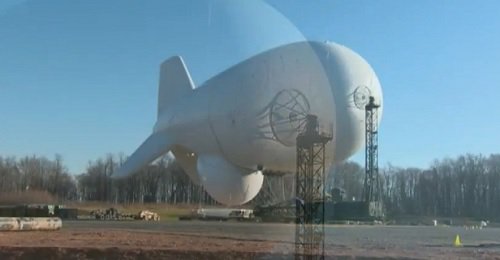
ABERDEEN PROVING GROUND, Maryland – After a protracted development program, The U.S. Army is planning to finally deploy by year?s end the first of its new airships designed to aid in air and missile threat detection for the Northeastern U.S.
The deployment is highlighting what some in the nation?s defense establishment say is a vulnerability in U.S. homeland protection: the ability to detect a cruise missile targeting a U.S. city.
Cruise missiles are some of the most complex targets as they often fly very low – possibly below radar detection, operate at slow speeds and feature low radar cross sections.
Their proliferation worries some defense planners, who fear a cruise missile could be launched from a ship or aircraft off the U.S. coast, giving commanders little time to react.
The history of the Joint Land Attack Cruise Missile Defense Elevated Netted Sensor System (Jlens) is as complicated as its name is long.
The program began in the late 1990s, and Raytheon won the contract to develop the system in 1998.
The program has cost $2.8 billion, a number that has raised the eyebrows of some in the national security community. The Pentagon originally envisioned fielding multiple systems, but has only built one thus far for operations.
After multiple testing periods, the Joint Chiefs of Staff finally approved a three-year evaluation, which will include a unique blend of actual operations, testing, and tactics formulation. The evaluation begins next year and runs through fiscal 2017.
Each Jlens ?orbit,? or system, consists of two tethered aerostats ? one carries a 360-deg., VHF surveillance radar and the other carries an X-band fire control radar; both sensors are manufactured by Raytheon.
Each aerostat is 243-ft. long and filled with a helium-air mix similar to the pressure of air outside the structure; this design allows for the system to stay aloft for extended periods even if punctured.
The first of two aerostats, the one carrying the VHF radar, is set to deploy within days depending on final checkout and weather.
The second will follow in early spring, says Army Capt. Matt Villa, the Jlens plans and coordination officer at Aberdeen.
They will be moored at the Graces Quarters facility at Aberdeen and float at about 10,000 ft. The plan is to operate the aerostats continuously, only shutting them down when maintenance is necessary or weather intervenes. They are built to withstand 100 kt. winds.
From this high altitude, the aerostats will monitor airborne traffic in an area about the size of Texas, stretching from northern New York state to southern North Carolina.
They will provide a unique vantage for the North American Aerospace Defense Command (Norad) and for homeland defense.
Existing air and missile defense radars in the U.S. are ground-based, limiting their field of view behind obstructions, such as mountains, hills and tall buildings.
Jlens, by contrast, will be able to monitor activities in canyons, says Army Maj. Gen. Glenn Bramhall, commander of the 263rd Army Air and Missile Defense Command.
Of course surveillance tactics such as these inevitably raise privacy concerns.
Source: tatoott1009.com
